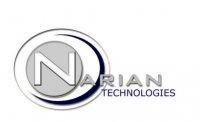Narian Technologies
We’re Updating Our Profiles Section
Stay tuned for all new and updated exclusive profiles on companies and organizations involved in the ecosystem.

With nearly 300 NFC or other mobile applications developed and several NFC patents on file, U.S.-based Narian is an example of an innovative company that has done much on a shoestring.
The company was one of the first to begin developing NFC applications, in 2003, after co-creators Philips Semiconductors and Sony announced the launch of the technology but before the hype brought other developers and design houses into the market to design payment, ticketing, loyalty and other applications. All have been waiting for the infrastructure of NFC phones to materialize.
While payment and ticketing applications get most of the press when talk turns to future NFC services, Narian and its CTO Einar Rosenberg early on saw the complexity of this approach, which would require telcos, banks and other ecosystem players to come together to share revenue as they emulate contactless cards on phones.
Instead, Narian has been pushing the idea of using NFC’s reader mode, and combining it with the mobile network. As such, Narian apps would have consumers tapping their contactless cards and later their NFC phones in restaurants, delis and stadium concession stands to order from the menu or to summon wait staff. They could also, for example, check the availability of products or the latest offers at store shelves.
Until NFC phones arrive, consumers initially would tap contactless cards on NFC-enabled “Flip Readers” the company developed. The device would initiate communication over the mobile network with the consumers’ phones and also with the store or restaurant by fixed Internet, via a Narian server handling the ordering or other service. The system could also alert consumers when their orders are ready, say at a supermarket deli counter.
The delay in NFC phones had earlier prompted Narian to begin work on contactless stickers that incorporate both NFC and Bluetooth chips, enabling applications on the sticker to communicate directly with the handset. Narian said it had the sticker available before the end of 2006, which is earlier than the prototype Bluetooth stickers that are now due to hit the market early this year from one or more other companies. The stickers, which are more sophisticated than passive stickers that mimic contactless cards, are attracting some interest as delays in NFC phones continue.
But Narian and Rosenberg have abandoned the costly sticker project and are focusing on the NFC and related mobile applications and the Flip Reader, along with consulting on NFC, contactless, location-based services, and other mobile and contactless technologies.












